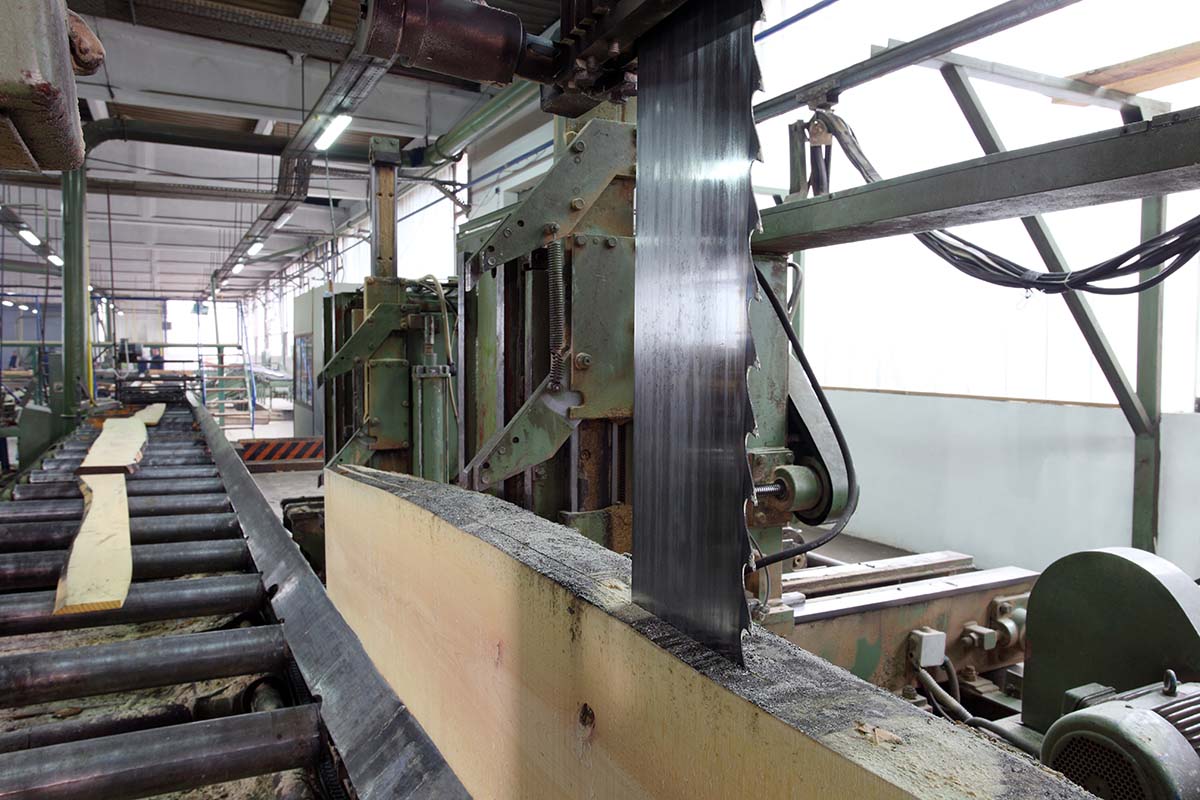In the manufacturing and lumber industries, the term ‘industrial lumber’ is used to describe a myriad of things. If you’re on the outside looking in or new to the industry, being able to identify what is and what is not industrial lumber can seem like a challenge.
Although it may take a while before it clicks, understanding industrial lumber in its entirety will help you operate more efficiently in the industry, and sound like a pro while doing it.
To fully grasp industrial lumber, knowing how it’s made, what it’s used for, and its environmental impact are all essential. Spoiler alert: industrial lumber is actually great for the environment.
How is Industrial Lumber Made?
No, it’s not a dumb question. The process by which industrial lumber is created is actually pretty interesting and is essential to comprehending the term as a whole.
In sawmills, not every log they split is perfect. Some have random knots and striations, while others have scratches and scars. Wood from the imperfect parts of logs isn’t what you would use to build a table or chair, frame a house, or even build a fence. In most people’s eyes, this would be considered junk lumber, but to us, it’s industrial lumber.
Industrial lumber is usually identified by sawmills using CNC and laser technology – who said the lumber industry isn’t advanced? As the lumber is running through the machine, laser targeting systems identify the imperfect parts of the wood, and those parts are cut away from the log.
Check out how modern sawmills use new technology in the video above!
Just because this wood isn’t perfect, does not mean it’s without use.
At sawmills, lumber is categorized and separated by grade. Lumber is graded on a level of one to four – one being the highest grade lumber and four being industrial lumber. After being consolidated by grade, industrial lumber is then sent out to manufacturers like Conner where we can use it to build pallets, crates, dunnage, and other industrial wood products, while the higher grades are sent to furniture manufacturers, home builders, big box stores, and other industries that use the higher grade wood products.
What is it Used For?
Industrial lumber’s journey is far from over when it reaches the manufacturer.
When industrial lumber arrives at manufacturing facilities, its possibilities become endless. It can be used to make a plethora of industrial wood products that aid in transportation, warehousing, manufacturing, and more.
These products made from industrial lumber aren’t made to be aesthetically pleasing. Industrial wood isn’t very pretty. Instead, industrial lumber is used to create products that are tough and reliable. Industrial wood products aren’t made to be used once, but rather to be used hundreds of times throughout many cycles and years of use.
For pallets, this entails roughly 3-5 years of constant wear-and-tear. Exchanging hands constantly, being lifted by pallet jacks and forklifts, and being weighed down with freight is what this type of industrial lumber product sees every day.
Despite the rough life of pallets, dunnage probably takes the cake for the most heavy-duty use.
Wood dunnage can be found on semi-trucks supporting heavy cargo, under the wheels of trucks being used as a stopping block, or anywhere else you might have a need for heavy-duty wood. In fact, if you’ve ever spent time in a warehouse, you’ll know that there’s probably dunnage there that’s seen daily use for years.
Wood dunnage can be found on semi-trucks supporting heavy cargo, under the wheels of trucks being used as a stopping block, or anywhere else you might have a need for heavy-duty wood. Share on XAlthough their lives may not be pretty, industrial lumber products are essential in supporting features of the supply chain across the globe.
With millions of these products being made and used every day, it’s important to note (especially nowadays) the environmental impact of industrial lumber.
Can Industrial Lumber be Eco-Friendly?
In today’s world, everyone is a little bit more environmentally conscious, as they should be! Luckily, industrial lumber products are eco-friendly for a variety of reasons. Below are just three of them!
1. Industrial lumber products don’t contribute to the dispersal of greenhouse gasses. The Carbon that is absorbed by trees when they’re alive is kept in industrial lumber throughout its life cycle, making the manufacturing of industrial lumber a Carbon-neutral process. In many other industrial processes, the creation of products can release carbon (CO2) by burning, boiling, or melting materials.
The Carbon that is absorbed by trees when they're alive is kept in industrial lumber throughout its life cycle, making the manufacturing of industrial lumber a Carbon-neutral process. In many other industrial processes, the creation of… Share on X2. Industrial lumber is renewable. Unlike the creation of plastics or rubber, lumber is one of the most renewable resources on our planet. Although trees are being cut down, more are being planted every day. In fact, roughly 750 million trees are planted by wood product companies in the United States every year.
3. Using industrial lumber contributes positively to the environment. As previously discussed, industrial lumber is the waste wood that’s leftover after the high-quality grades are removed from a log. If industries like ours didn’t use that industrial wood, it would just be thrown away. By simply using these products, you’re actively using recycled materials.
So, rest easy knowing that industrial lumber is not only making your life easier, but the planet’s as well!
“Wood” You Say You Understand Industrial Lumber Now?
Although industrial lumber can seem complex on its face, hopefully, we’ve helped make it a term you’ll use every day! From its creation to its uses and environmental impact, industrial lumber is an important forestry product.



![[PRESS RELEASE] Conner Industries Announces Major Guardian Packaging Expansion](https://conner.b-cdn.net/wp-content/uploads/2024/10/Guardian-Packaging-Expansion-500x383.jpg)
![[PRESS RELEASE] Conner Industries Announces Website Dedicated to Integrated Packaging Division](https://conner.b-cdn.net/wp-content/uploads/2024/05/Conner-Packaging-Blog-500x383.jpg)


